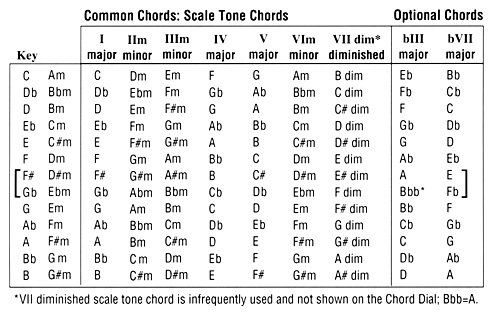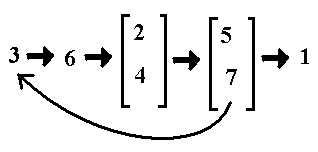|
Scale Construction: Scales are constructed of a set standard of intervals. The pattern
is: Tone, Tone, Semi-tone, Tone, Tone, Tone, Semi-tone.
This means
that if we analyze the scale of C major, C D E F G A B C, we will see that the
distance between C and D is a tone, between D and E is a tone, between E and F is a semi-tone, between F and G is a tone,
between G and A is a tone, between A and B is a tone and the distance between B and C is a semi-tone,
Number system: We refer to the notes in a scale by their numeric placement. C = 1, D =2, E =3, F =4, G =5, A =6, B =7
Chord Construction:
You can build any major chord by using the first, third and fifth interval of the major scale.
Example: C major = CEG
You can build any minor chord by flattening the third of the major
chord.
Example: C minor = CEbG
Relative Minor: The relative
minor is the minor key that starts on the 6th note of the major scale. It
uses all the same notes as the major scale (key) but is minor. This is of little
importance to the Tex-Mex accordionist because the great majority of Tex-Mex music is in major keys.
Sequence of
Chords: There is a sequence of chords which can help the musician unlock
the secrets to understanding music. In any given key, some chords will be minor
and some will be major. Following the numeric system for naming chords, this
is the pattern:
1,4 & 5 Major chords
Example: In the Key of C, C, F
and G are major chords.
2, 3 & 6 Minor chords
Example: In the Key of
C, D, E and A are minor chords.
(See chart for sequence in other keys.)
Remember
that for the GCF accordion you will only need to be familiar with 5 keys, GCFD & Bb.


|